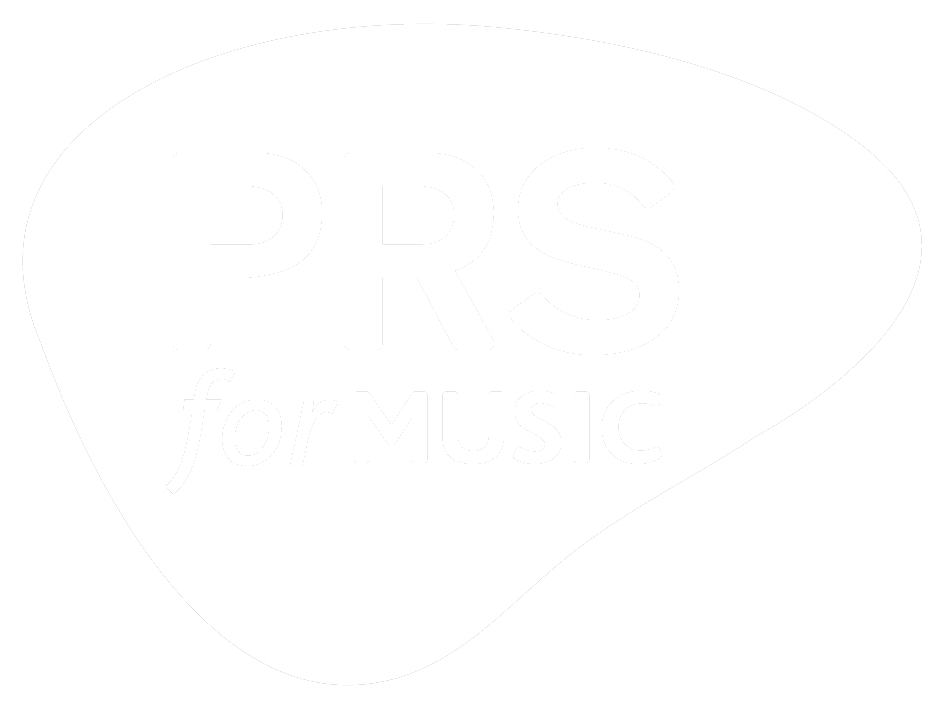The subconscious mind remains an unfathomable well of potential inspiration. However, you might be surprised at some of the figures that float about in Goldie’s subconscious, not least Judie Tzuch. She perhaps isn’t the first songwriter you imagine would have made much impact on him as a 13-year-old boy, kicking a ball around in Walsall. But it was the string arrangements on her 1979 hit Stay With Me Till Dawn that always “stuck” with him. “They provoked a fascination with ensemble pieces and became a rich source of inspiration for my own songwriting,” he explains.
Judie is but one artist to have contributed to his particularly rich musical palette – other adolescent influences range from Japan, Steel Pulse, and The Human League to Miles Davis, and Pat Metheny – Goldie covers Metheny’s track Are You Going With Me? on his latest album The Journey Man. It’s likely that the influence of these artists contributed to him challenging certain assumptions about the melodic limitations of Electronic Dance Music (EDM). And although he thinks that electronic artists are still “infamous for not adapting that well to the art of songwriting” – there is something of a tendency to rely on catchy hooks and top lines alone – his classic ’95 debut Timeless decimated this prevailing belief.
Musical duality
It was the drum‘n’bass scene’s first platinum album – lauded, not only for “revolutionising jungle”, but also for ‘”proving that hardcore could be more conventionally musical”. The album hints at his ‘musical duality’ throughout, foreshadowing the personal path his love for classical music would take him on. The soaring synth-strings on the opening chords of Kemistry provoke similar feelings of melancholia that you might experience listening to Ravel’s Dance for a Dead Princess. Never one to shy from a new challenge, his love for the genre – “because you just can’t mess with 400 years of written scores on a page” – has certainly taken him on some interesting detours, at least within the conventional expectations of EDM.
In 2008 he learned to conduct an orchestra on reality TV talent show Maestro. In the following year he performed his own orchestral composition at the Royal Albert Hall. It was this bold step that enabled him to translate his original vision for Timeless into Timeless (Sine Tempore). In 2014 it was performed live with the Heritage Orchestra at the Wilderness Festival to wide acclaim, and was repeated the following year as part of the Meltdown Festival at London’s Royal Festival Hall. As he explains, in its earlier incarnation he was “flirting with operatic themes” on tracks such as Sea of Tears and Mother from his subsequent album Saturnz Return.
His training opened up a whole realm of new possibilities that have eased the process of songwriting and composing for him, as well as consolidating his respect for it. This is a striking contrast to his years of experimentation with music in the ‘90s, where “pushing the boundaries of technology” was at the centre of his creations. Technology to the limits Goldie shaped his craft watching Dego McFarlane and Mark Clair (aka 4hero) record tracks in the studio. They were pioneers of breakbeat who created tracks such as Cookin’ Up Ya Brain and Journey From The Light that embodied the genre’s sense of adventure.
“I was trying to gauge the possibilities of the technology,” says Goldie. “I remember one session we did that lasted over three days, just experimenting, pushing the technology to its limits. We’d come up with mad ideas and then try to create them. We were sampling from ourselves and then resampling, twisting sounds around and pushing them into all sorts of places.” His passion for breakbeat and drum‘n’bass remain continual passions in his work. “Technologically, breakbeat has managed to surpass all other forms of music to date,” he explains. “There isn’t a recording engineer alive who can tell me there’s any other form of music that is more complex than the music we make.”
However, it’s interesting to hear him reflect that, as much as technology will always change and develop, it’s the musicality that endures. And as he sat in the studio creating breakbeat records, you wonder if he ever foresaw writing works such as Fragments of Gold – a piece inspired by mediaeval chants that he performed live in Glasgow Cathedral. But then, this is an artist who has never followed any ordinary creative trajectory or imposed any limitations on the different mediums he chooses to express himself. He has always felt the need to create, make his mark or splash a canvas, wherever that may be.
Filling life with colour
Goldie first found an outlet for his self-expression through graffiti, adding colour to the blank walls of the estates around Wolverhampton’s Heathtown. His undeniable talent brought him to the attention of director Dick Fontaine, who featured him in his 1987 film Bombin’, which captured New York artist Brim Fuentes visiting the UK.
Goldie remembers “not having much to look at as a kid” – he spent the majority of his childhood moving from foster homes to local government institutions – but having a “whole load of feelings” he wanted to portray. As he says in the film, “you can’t stare at a blank wall for too long”. Art not only gave him the opportunity to express himself “without boundaries” but “to fill his life with colour”.
A stint in New York led to a meeting with Afrika Bambaataa – just one of the many inspirational figures in the melting pot of influences that continue to make Goldie’s music so fascinating. As Goldie says, “In my music is everything I’ve learned, everyone I’ve met, everything I’ve experienced.” This is reflected perhaps most pertinently in new album The Journey Man. It’s as though the whole cast of Goldie’s colourful past reside in this album. You can almost smell and taste the graffiti paint he used to spray the walls of Manhattan on Castaway – the song that vividly depicts his time in ‘90s New York where he was immersed in the streets and B-boy culture. Where Timeless seems to capture the more ephemeral snapshots of Goldie’s life, there is a sense that The Journey Man yearns to pin down the memories that leap around in his subconscious, for posterity.
From Afrika Bambatta to Pat Metheny and David Bowie (who used to attend Goldie’s legendary Metalheadz Sunday Sessions at London’s Blue Note), they’re all permanent fixtures in this album, sidestepping the capricious nature of perception and memory. Goldie was originally going to call the album The Proustian Effect because of its sensory impact. He says, “It takes you back to playing football in 1977, or to getting oil on yourself when the chain broke on your bike.”
Forging his own path
As much as this album takes dips into the past, Goldie continues to look forward too – utilising the new talents of artists such as vocalist and songwriter Natalie Duncan, who was discovered when chosen in the three-part BBC series Goldie’s Band By Royal Appointment. Other featured vocalists on the album include Terri Walker, Tyler Lee Daly, Natalie Williams, José James, Naomi Pryor as well as Goldie’s wife, Mika Wassenaar. Although The Journey Man took almost five years to incubate, it was also one of his easiest albums to create – “I really enjoyed the process – I was getting up at 5am to write songs” – in comparison to his ’98 follow up to Timeless, Saturnz Return, which confronted his complicated past with his mother. Goldie doesn’t wish to define his identity by the more ‘negative’ experiences that surround his upbringing because “otherwise the small violins come out”. In fact, it’s clear to see that, even as a young man in the Fontaine documentary, he exudes a self-assured determination to forge his own path and seize opportunities, despite his past.
However, when he comments that his music is about fallout,”and the damage that has been done to the system” – there is a sense he is also reflecting on his own feelings of displacement and loss. Goldie is fascinated by the limbic system, which is so intrinsic to how we form memory and responses from our experiences, whether traumatic or positive. The same areas of the brain are activated when we witness both images of war or hear a beautiful piece of music.
A universal language
He believes this raises interesting questions surrounding what motivates people to create and write music. He marvels, in particular, at the way in which classical music speaks a universal language that conveys feelings we’re all able to understand on a subconscious level. Goldie references Gorecki’s Symphony of Sorrowful Songs, which he finds particularly moving, whose dominant themes deal with motherhood and separation through war. He says: “Even before I knew what the words sung in Polish meant, I understood instinctively the themes that it was conveying because I always had the feeling of mothering from listening to the piece. This is where music can be so directive and truthful and powerful.”
Goldie still chooses art and strong visual images as a medium to express his own feelings, especially when communicating with other musicians and engineers – who help him extrapolate ideas from inside his head and into the studio. He explains: “I might say that I want the music to sound like insects crawling out of a rock, then we’ll establish the instruments that embody this – perhaps a Piccolo? Probably not a tuba…” He advises songwriters to use visuals that draw the shape of their song. He says: ”Become raconteurs. Get your heads out of a computer and your ideas down into a book. Identify influences for the track, whether that’s Captain Beefheart, Stormzy, Status Quo or Stevie Wonder – it’s all about putting the key melodies together.”
Although marriage and a passion for bikram yoga have mellowed him slightly, he continues to embrace fresh and new ideas that will challenge him. The Journey Man Tour in November will be the first time Goldie has brought together members of the Heritage Orchestra, with special guests, to perform his material live. Venues include London’s Roundhouse, the Philharmonic Hall in Liverpool, and Civic Hall in Goldie’s hometown of Wolverhampton. Not unlike witnessing a piece of graffiti art created right in front of your eyes, these performances will recapture some of the spontaneity of his earlier art works. He says: “This will be one of a kind: a culmination of everything past, present and future in my music, like it has never been heard before, live. I’ve got the absolute best of the best on stage with me and we’re going to create something new right in front of your eyes…alchemy in its purest form.”
Goldie’s new found sense of contentment could be in part down to the fact he’s just released an album that’s “the most honest, and bold, insight into who I really am and where my heart wants to be”. Or it could be that he’s “finally listening to the kid in my head, rather than forgetting him”. Either way, he has certainly found a home at the heart of British culture and even, despite his maverick inclinations, acceptance from the heart of the establishment. In 2012 he was selected as one of the BBC’s New Elizabethans, (60 people – ranging from David Hockney to Roald Dahl, David Bowie and Tim Berners-Lee). Four years later, he was awarded the MBE in the Queen’s New Year Honours. But perhaps, most importantly, his music will continue to stand the test of time, just as 400 years of classical music have. No doubt leaving an influence that’s as indelible as any score of music, or piece of graffiti art hanging in a gallery.
Article first featured in The Works [2017]





